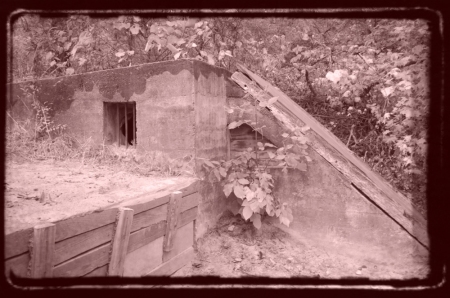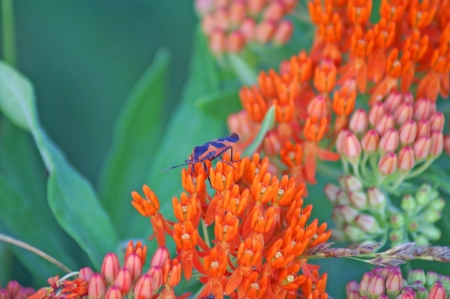Not too long after I moved to Northeast Arkansas I was talking with a local who wanted to know where I worked. When I told them that I worked at Crowley’s Ridge State Park they immediately asked “Have you seen the electric chair room?” No one had told me anything about an electric chair on the park grounds, so I asked about it when I went in to the office the next day. My coworkers laughed and then one of them took me to see “the electric chair room.” It seems that some time ago a rumor was started that there was a building on park grounds that had once housed an electric chair. People would be tried and if found guilty they were immediately taken to the electric chair and executed. To help the rumors along, there is a small building on the grounds that has bars in the windows and a metal base where something was once bolted to the floor. With a little imagination you could come up with many exciting or scary stories about how it was used once upon a time.
Now it is true that early members of the community held court at a spot on Benjamin Crowley’s homestead and the park grounds are located on part of what was his homestead. Also, I would not be surprised to find out that those found guilty of a crime were dealt with quickly. However, court was held here in the 1830s, before the era of the electric chair. The truth is, before the park got electric lines there was a large generator. The generator was bolted to the floor of a small building and bars were installed on the windows to keep people from getting into the room and getting hurt.
Although, our scary story is not true there are many places in Arkansas that do have their own “true” ghost stories, tales of odd creatures, or simply unexplained happenings and October is the perfect time to find them. Powhatan Courthouse State Park is said to be haunted by the ghost of a man who was lynched before he had a trial. Now he hangs around the courtroom waiting for his justice, or maybe just his revenge. The White River has its own river monster, named Whitey, that has been spotted several times around Jacksonport and Gurdon has the famous Gurdon Light, which is supposedly the light of a murdered railway man looking for his killer.
For more information on the spooky side of Arkansas visit Haunted Arkansas or check out the Arkansas State Parks Calendar of Events for a Halloween event near you.
Disclaimer: Remember, some sites mentioned may be private property or businesses. Ghost hunting is not an excuse for trespassing. Arkansas State Parks close at 10 p.m. Any groups wishing to tour the park after hours will need to make arrangements with the park staff.
Heather Runyan graduated from Henderson State University with a bachelor’s degree in Recreation and Park Administration and after college served two terms as an AmeriCorps member. She began working for Arkansas State Parks in 2006 as the Park Interpreter at Crowley’s Ridge State Park. Heather is a member of the National Association for Interpretation and a Certified Interpretive Guide.





 Posted by Arkansas State Parks
Posted by Arkansas State Parks 

 Facebook
Facebook Twitter
Twitter YouTube
YouTube
